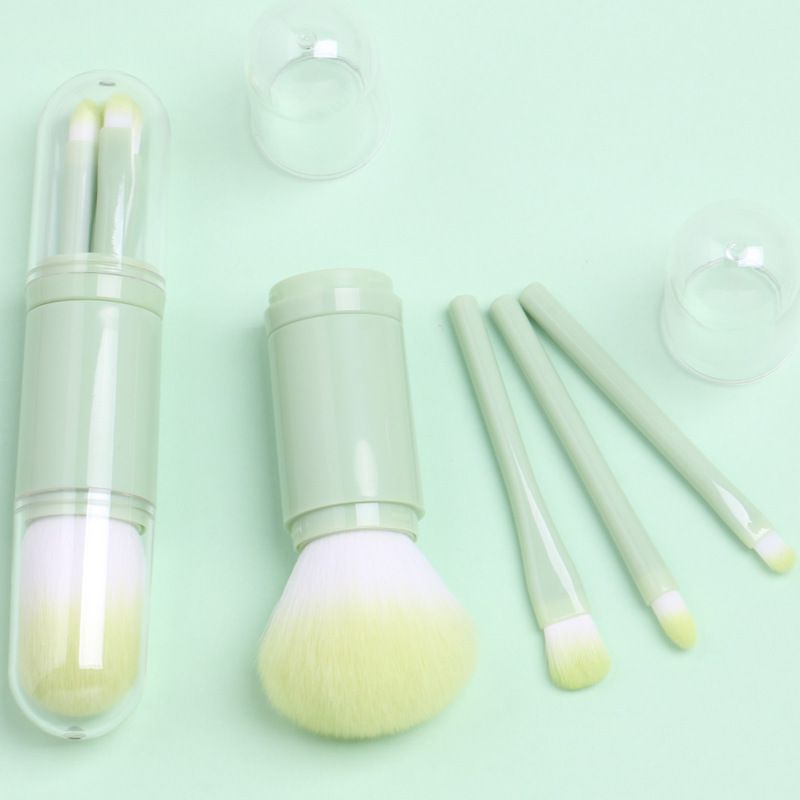Industry news
Bristle Clustering Techniques: Automated vs. Hand-Tied Methods for Consistency and Quality
- 336 Views
- 2025-07-23 01:32:05
Bristle Clustering Techniques Automated vs Hand-Tied Methods for Consistency and Quality
In the realm of makeup brush manufacturing, bristle clustering stands as a cornerstone process, directly influencing a brush’s performance—from powder pickup and blending precision to durability and user comfort. As the industry evolves, manufacturers face a critical choice: automated bristle clustering or traditional hand-tied methods. Both approaches carry distinct strengths and limitations, shaping the consistency, quality, and market positioning of the final product.

Automated Bristle Clustering: Precision Meets Efficiency
Driven by Industry 4.0 advancements, automated clustering relies on computer-controlled machinery, such as CNC (Computer Numerical Control) systems and robotic arms, to streamline the tufting process. These systems excel in repeatability: pre-programmed parameters—including bristle density, filament alignment, and tuft height—ensure minimal variation across batches. For example, a high-speed automated line can produce 5,000 brush heads daily with a bristle length uniformity rate of 98%, compared to manual methods that often hover around 85% for large runs.
Efficiency is another hallmark. Automated systems reduce labor dependency, cutting production time by up to 60% for standardized brush types like foundation or eyeshadow brushes. This scalability makes them ideal for mass-market brands prioritizing cost-effectiveness and meeting high-volume orders. Recent innovations, such as AI-powered visual inspection tools, further enhance quality control by detecting defects (e.g., loose bristles or uneven tufts) in real time, reducing waste by 15–20%.
However, automation has limitations. Rigid programming struggles with highly customized designs, such as asymmetrical contour brushes or brushes using mixed bristle materials (e.g., synthetic and natural fibers). The initial investment in machinery—often exceeding $100,000—also poses a barrier for small manufacturers.
Hand-Tied Bristle Methods: Craftsmanship and Customization
Hand-tied clustering, a centuries-old technique, leverages skilled artisans to manually knot, shape, and secure bristle tufts. This method thrives on nuance: craftsmen adjust tension and alignment based on bristle flexibility, creating brushes with superior “feel”—a soft, natural sweep critical for luxury segments. For instance, high-end powder brushes often use hand-tied clusters to achieve a featherlight, cloud-like texture that automated machines, despite precision, struggle to replicate.
Customization is another strength. Artisans can adapt to unique requirements, such as blending rare materials (e.g., sable hair) or crafting limited-edition brush shapes for prestige brands. This flexibility supports storytelling, as “handmade” labels resonate with consumers seeking authenticity and artisanal value, often justifying 30–50% price premiums.
Yet, hand-tying faces challenges in consistency. Even master craftsmen may produce slight variations in tuft density or knot tightness across pieces, leading to minor performance differences. Production speed is also a bottleneck: a skilled artisan might craft only 50–100 premium brush heads daily, limiting scalability. Rising labor costs, particularly for specialized craftsmen, further strain profitability.
Comparing Consistency and Quality: A Balanced View
Consistency: Automated methods dominate here. Machine calibration ensures every brush in a batch meets exact specifications, reducing customer complaints about “uneven performance.” For brands targeting drugstore or mid-range markets, this reliability is non-negotiable.
Quality: Context matters. For precision-driven tools like angled eyeliner brushes, automation’s uniformity ensures sharp, consistent lines. For luxury face brushes, hand-tying’s artisanal touch delivers a tactile experience that elevates the user ritual—an intangible quality that drives brand loyalty.
The Path Forward: Hybrid Solutions
Rather than choosing one method, leading manufacturers increasingly adopt hybrid models. Automated systems handle high-volume, standardized components (e.g., bristle cutting and initial tufting), while artisans refine critical details (e.g., shaping brush tips or inspecting for premium finish). This approach balances efficiency, consistency, and craftsmanship, catering to diverse market needs.
In conclusion, automated and hand-tied bristle clustering are not rivals but complementary tools. Understanding their trade-offs—efficiency vs. artistry, scalability vs. customization—empowers manufacturers to align production strategies with brand identity, ensuring every makeup brush delivers both performance and purpose.











